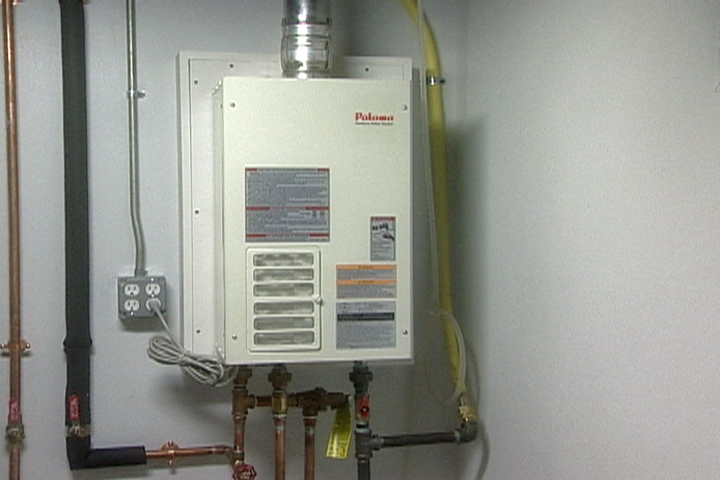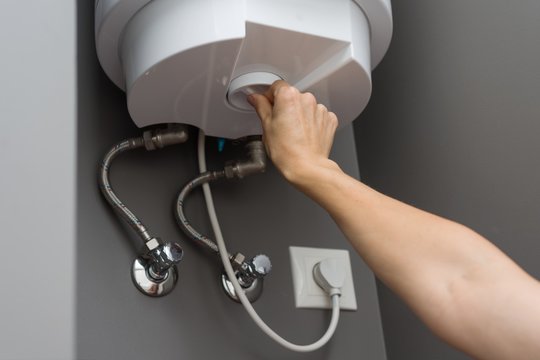Maintaining Your Home's Hot Water System: Essential GuidelinesEasy Guide to Maintaining Your Home's Hot Water System
Maintaining Your Home's Hot Water System: Essential GuidelinesEasy Guide to Maintaining Your Home's Hot Water System
Blog Article
The author is making several great observations regarding Tips For Maintaining Your Hot Water Heater in general in this post further down.

Warm water is important for everyday comfort, whether it's for a refreshing shower or washing dishes. To guarantee your warm water system runs successfully and lasts much longer, normal upkeep is vital. This write-up gives sensible pointers and insights on how to keep your home's warm water system to stay clear of disturbances and costly repair work.
Introduction
Maintaining your home's warm water system could appear difficult, but with a couple of straightforward steps, you can ensure it operates efficiently for several years to find. This guide covers everything from recognizing your hot water system to do it yourself maintenance suggestions and knowing when to call specialist assistance.
Significance of Keeping Your Warm Water System
Routine maintenance not just expands the life expectancy of your hot water system yet additionally ensures it runs effectively. Neglecting upkeep can cause reduced efficiency, greater power bills, and also early failure of the system.
Indicators Your Warm Water System Needs Upkeep
Understanding when your hot water system requires interest can avoid major concerns. Watch out for signs such as irregular water temperature level, strange sounds from the heating unit, or rusty water.
Understanding Your Warm Water System
Before diving right into maintenance tasks, it's practical to understand the standard elements of your hot water system. Generally, this consists of the water heater itself, pipes, anode poles, and temperature controls.
Regular Monthly Upkeep Tasks
Regular regular monthly checks can aid catch minor concerns before they intensify.
Purging the Water Heater
Flushing your hot water heater gets rid of sediment accumulation, boosting efficiency and extending its life.
Monitoring and Replacing Anode Rods
Anode poles protect against corrosion inside the storage tank. Evaluating and changing them when worn out is important.
Checking and Readjusting Temperature Level Settings
Changing the temperature level setups makes certain optimal efficiency and safety and security.
DIY Tips for Upkeep
You can perform a number of upkeep tasks yourself to maintain your hot water system in top problem.
Looking for Leaks
On a regular basis inspect pipes and links for leaks, as these can result in water damages and greater bills.
Checking Stress Relief Valves
Evaluating the stress relief valve guarantees it operates correctly and stops too much pressure buildup.
Protecting Pipelines
Shielding hot water pipes minimizes warmth loss and can save energy.
When to Call an Expert
While do it yourself upkeep is beneficial, some concerns require expert know-how.
Complicated Concerns Calling For Professional Help
Examples include significant leaks, electric troubles, or if your water heater is regularly underperforming.
Routine Expert Upkeep Perks
Specialist upkeep can consist of thorough evaluations, tune-ups, and ensuring compliance with safety standards.
Conclusion
Routine maintenance of your home's hot water system is vital for effectiveness, durability, and expense financial savings. By complying with these ideas and understanding when to look for expert assistance, you can make sure a dependable supply of hot water without unexpected disturbances.
Water Heater Maintenance: The Basics
Maintaining your water heater will ensure it operates efficiently and has a longer lifespan. Neglecting regular maintenance can lead to costly repairs and an even bigger chunk of your savings if you have to replace it sooner than necessary. But there’s good news: Most water heater maintenance tasks are relatively simple and easy for homeowners with basic DIY skills.
Flush the Water Heater
Over time, sediment and minerals can build up in the tank, reducing its efficiency and potentially causing damage. To flush the tank, turn off the power or gas supply, attach a hose to the drain valve near the bottom and open the valve to drain the water until it runs clear. Ideally, flush the tank annually.
Replace the Anode Rod
The anode rod is a sacrificial metal rod that helps prevent corrosion inside the tank. Inspect and replace it every three to five years or per the manufacturer's recommendation. To replace the anode rod, turn off the power or gas supply, drain a few gallons of water from the tank, unscrew the old rod and replace it with a new one. If the anode rod is significantly corroded or covered in calcium buildup, it's a sign the water heater may need to be replaced soon.
Tune-Up
A yearly tune-up can help identify potential issues and ensure your water heater operates at peak efficiency. This typically involves checking the thermostat, burner assembly (for gas heaters) and any other components specified by the manufacturer. During a tune-up, the technician may also clean the burner and adjust the pilot light (for gas heaters) or examine the heating elements (for electric heaters).
How to Maintain Your Water Heater
Insulate the tank. Insulating the tank can improve energy efficiency and reduce heat loss, saving you money on energy bills. You can purchase precut insulation blankets designed specifically for water heaters or use standard fiberglass insulation wrapped securely around the tank. Check the temperature. The recommended water temperature for most households is around 120 degrees Fahrenheit (49 degrees Celsius). Higher temperatures can increase energy costs and potentially cause scalding. Use a kitchen thermometer to check the temperature at the faucet nearest the water heater. Monitor water pressure. Excessive water pressure can strain the water heater and cause leaks or even tank failure. Install a pressure-reducing valve if necessary. The ideal water pressure range is between 60 and 70 PSI (pounds per square inch). Test the temperature and pressure (T&P) relief valve. The T&P relief valve is a safety feature that releases pressure if the tank gets too hot or the pressure builds up too high. Test it annually by lifting the lever and allowing a small amount of water to release. Replace the valve if it doesn't release water or reseal properly. Check for leaks. Regularly inspect the tank, pipes and fittings for leaks or corrosion. Deal with issues promptly to prevent further damage. Even a small leak can lead to significant water damage over time. Consider a tankless water heater. If your traditional tank-style water heater is nearing the end of its lifespan ( typically 10 years), consider replacing it with a tankless water heater. These units heat water on demand, reducing standby energy losses and potentially saving you money on your energy bills. Schedule professional maintenance. While homeowners can perform many water heater maintenance tasks, it's still a good idea to schedule professional maintenance every few years. A plumber or HVAC technician can thoroughly inspect the unit, identify potential issues and ensure it operates safely and efficiently. https://www.homeserve.com/en-us/blog/home-improvement/hot-water-heater-maintanence/

Do you enjoy reading about What Kind of Maintenance Do Water Heaters Need?? Post a review directly below. We will be happy to hear your ideas about this blog post. Hoping to see you back again in the near future. Are you aware of another person who is interested by the topic? Be sure promote it. Thanks for being here. Revisit us soon.
Explore Now Report this page